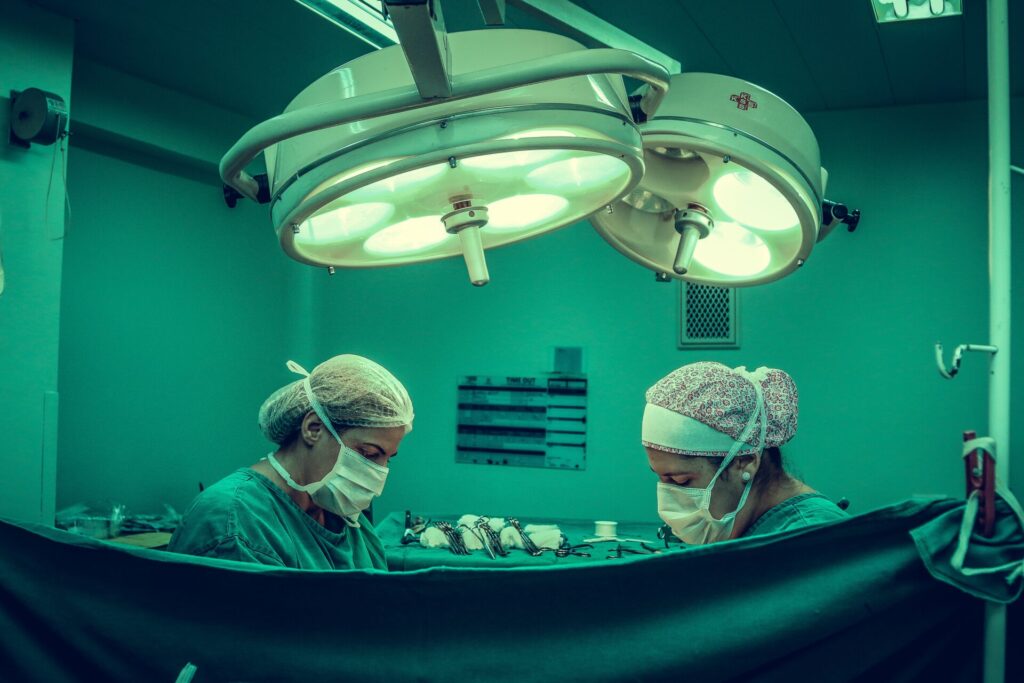How Physical Therapy Helps After Partial Knee Replacement
Have you recently had a partial knee replacement and are now wondering how physical therapy will help your recovery? You’re in the right place! Physical therapy can play an important role in helping post-surgery patients get back to their life. Although it might seem overwhelming, with the right education and support, you can make great progress on the road to recovering from surgery–and physical therapy is integral in this journey. In this blog post, we’ll discuss how physical therapy after partial knee replacement helps improve mobility and quality of life for those who have undergone a procedure such as this. We’ll explain what healing looks like after joint replacement surgery and how specialized exercises can help increase flexibility and strength, ultimately leading to better outcomes. So keep reading if you want to learn more about physical therapy after partial knee replacement!
What is Partial Knee Replacement and Why It Is Necessary
When most people hear the term ‘knee replacement’, they tend to picture a complete overhaul of the joint. However, partial knee replacement is a viable and less invasive option for those suffering from knee osteoarthritis confined to one area of the joint. During the surgery, only the damaged part of the knee is replaced with a prosthetic component, preserving healthy bone and ligaments. This targeted approach can often result in a quicker recovery time and less pain post-surgery compared to a total knee replacement. Partial knee replacement allows those suffering from knee osteoarthritis to regain mobility and live a more active lifestyle.
How Physical Therapy Helps to Strengthen the Area After a Partial Knee Replacement
After undergoing a partial knee replacement, physical therapy is a crucial step in ensuring that the area is strengthened and healed properly. Through a customized exercise program and targeted therapy sessions, physical therapists can help patients regain mobility and flexibility in the affected knee. By working with patients to rebuild muscle strength and endurance, physical therapy can also decrease pain and inflammation in the area. But physical therapy goes beyond just the physical benefits; it can also provide emotional support for patients who may be adjusting to their new knee after surgery. With the help of a skilled physical therapist, patients can be on the path to a full recovery and improved quality of life.
Types of Exercises Used in Physical Therapy for Partial Knee Replacements
A partial knee replacement can effectively treat knee pain and instability. Physical therapy is crucial for recovery, with exercises like range of motion, strength training, and balance work. Range of motion exercises improve flexibility and reduce stiffness. Strength training rebuilds muscle and improves function. Balance work helps regain footing and prevent falls. These exercises, when done with a personalized plan, gradually restore mobility and ensure long-term success.
Benefits of Physical Therapy After a Partial Knee Replacement Surgery
Partial knee replacement surgery can be a real game-changer for people with debilitating knee pain. However, the road to recovery can be long and challenging. That’s why physical therapy is so crucial in the postoperative period. Not only does it help to reduce pain and swelling, but it also helps to restore mobility, build strength, and improve overall function in the knee joint. By working with a physical therapist, patients can gain confidence in their ability to move and perform daily activities, which can go a long way in improving their quality of life. Plus, physical therapy can help to prevent future knee problems and ensure a long-lasting outcome from the surgery. So if you’re considering a partial knee replacement, don’t overlook the essential role that physical therapy plays in the recovery process.
Tips for Successful Recovery from Partial Knee Replacement Surgery
Undergoing partial knee replacement surgery can be a stressful experience, but proper recovery is crucial to ensure the success of the procedure. Luckily, several effective tips can make the recovery process smoother and more comfortable. Perhaps the most important tip is to follow your doctor’s instructions carefully, including any prescribed medications and physical therapy exercises. Additionally, it is essential to prioritize rest and avoid any strenuous activities that put excessive strain on your knee. Maintaining a healthy and balanced diet can also speed up the recovery process and lessen the risk of complications. By following these tips and staying positive, you can make a full recovery from partial knee replacement surgery and regain your mobility and quality of life.
Common Challenges Faced During Physical Therapy for a Partial Knee Replacement & How to Overcome Them
Physical therapy for a partial knee replacement is a crucial step in the recovery process. However, many patients experience challenges that can hinder their progress. Pain, stiffness, and difficulty bending the knee are just a few examples. These obstacles can be frustrating, but it’s essential to remember that they are normal and can be overcome with hard work and dedication. Communicating openly with your physical therapist about your challenges and working closely with them to develop a personalized treatment plan can help you reach your goals efficiently. It’s also crucial to stay positive and focused on the end goal. While the road to full recovery may be long and challenging, every effort made during physical therapy will be worth it in the end.
Conclusion
Partial knee replacement surgery can greatly improve quality of life and reduce pain. The recovery process involves physical therapy to regain strength and mobility. Understanding the exercises for recovery is crucial and helps alleviate stress and anxiety. Physical therapy after a partial knee replacement provides improved confidence in movement, better sleep, increased mobility, improved range of motion, and reduced pain and swelling. Progress may take longer than expected, but with focused attention and regular therapy, performance goals become easier to achieve over time. Recovery after partial knee replacement requires careful planning and adherence to a thorough rehabilitation program to regain the pre-surgery lifestyle.

